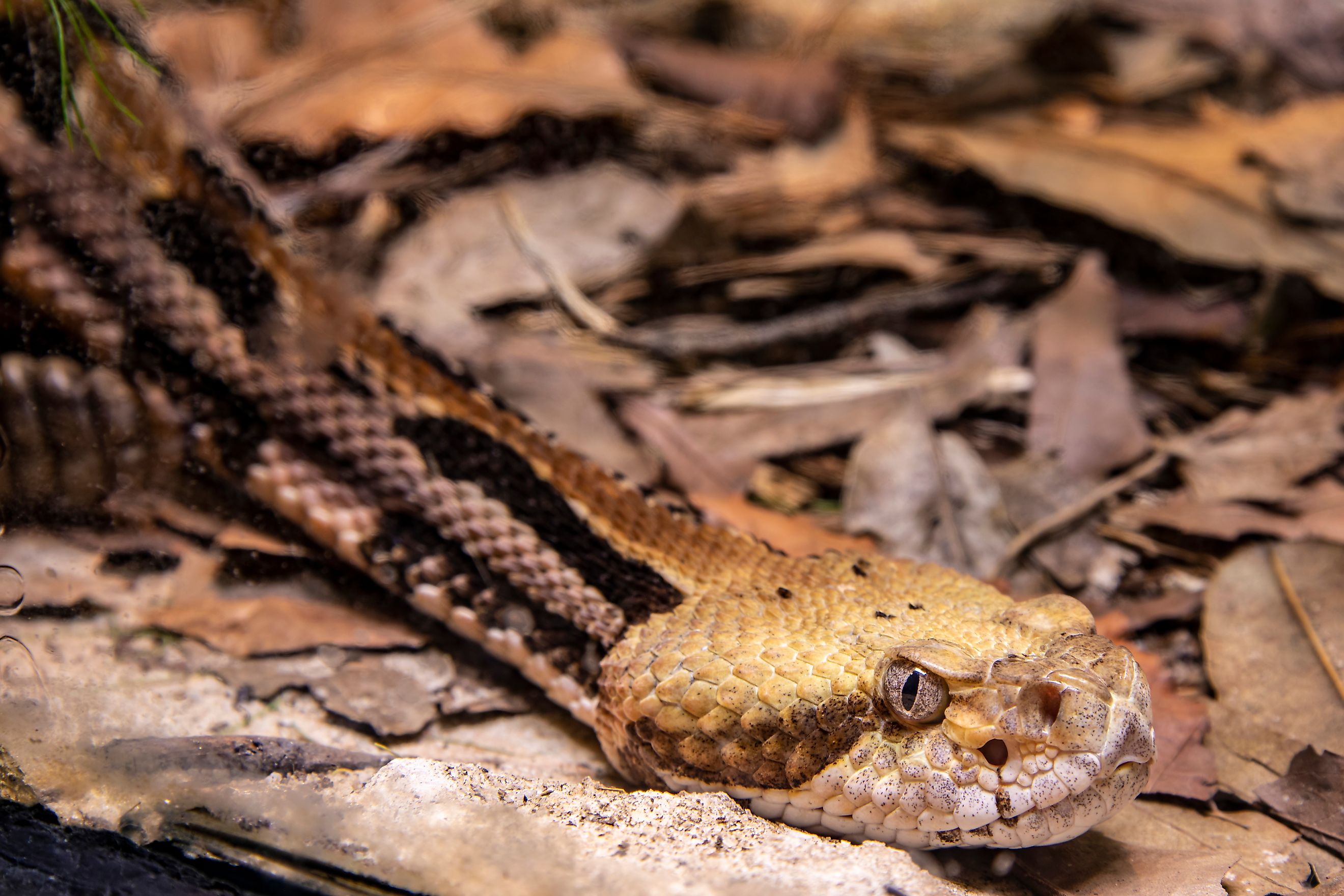
The 9 Deadliest Animals in Indiana
The Hoosier State is not known for its deadly fauna; it's better known for its endless fields and well-maintained highway rest stops. Yet, Indiana’s rich and varied ecosystems are home to a range of wildlife, some of which can pose serious risks to your safety as well as that of your pets. Here’s a closer look at the deadliest animals in Indiana, including their characteristics, habitats, what makes them dangerous, and how to avoid potential harm.
Eastern Timber Rattlesnake (Crotalus-horridus)
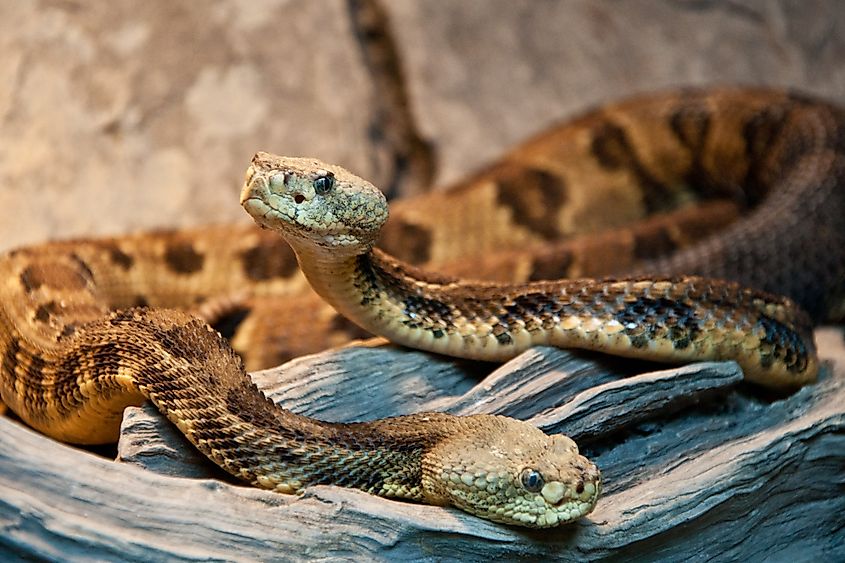
The Eastern Timber Rattlesnake is a stout-bodied snake with its titular rattle at its tail. It features a uniquely-patterned body, evolved to blend in with its surroundings, it is typically grayish-brown or yellowish with dark bands. This slithery predator prefers deciduous forests, mixed woodlands, and hilly areas with ample cover and prey. It often likes to find a secluded place to curl up, so be cautious around rocky out-croppings. Its venom contains hemotoxins that can cause severe tissue damage, pain, and, if untreated, can be fatal. While bites are infrequent, they are serious and require immediate medical attention. Be sure to stay on marked trails while hiking and avoid tall grass or underbrush. If bitten, immobilize the affected limb and seek emergency medical care immediately.
Northern Copperhead (Agkistrodon-contortrix)
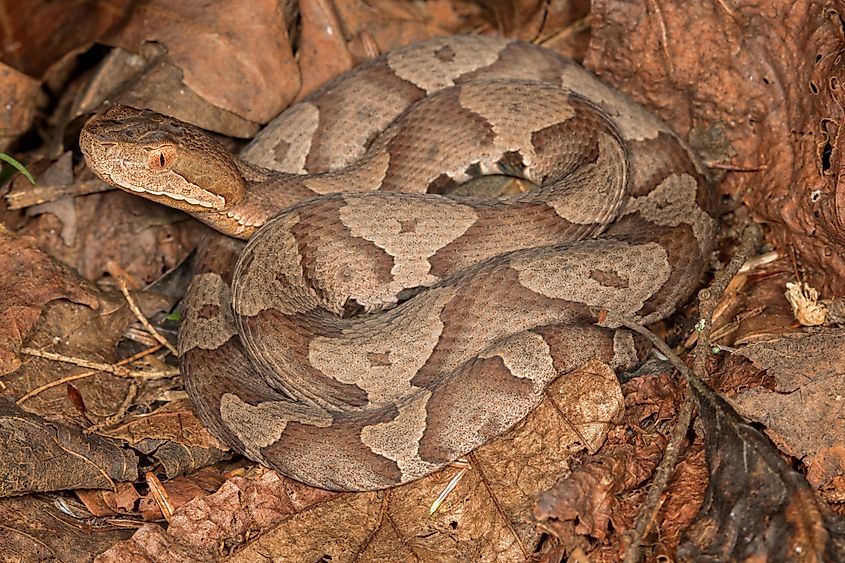
The Northern Copperhead can be recognized by its coppery-brown color with darker hourglass-shaped crossbands. Its body is relatively short and thick, with a broad head. It is commonly found in forests and rocky hillsides, but with sufficient cover and prey they do occasionally end up in suburban neighborhoods, making encounters with copperheads more common. Its venom, while less potent than other pit vipers, can still cause significant pain and swelling. Severe cases can lead to systemic reactions and be potentially fatal. To avoid them, be cautious around leaf litter or rock piles, wear boots and watch your step, and, if bitten, keep the affected area still and seek medical attention immediately.
Black Widow Spider (Latrodectus-mactans)
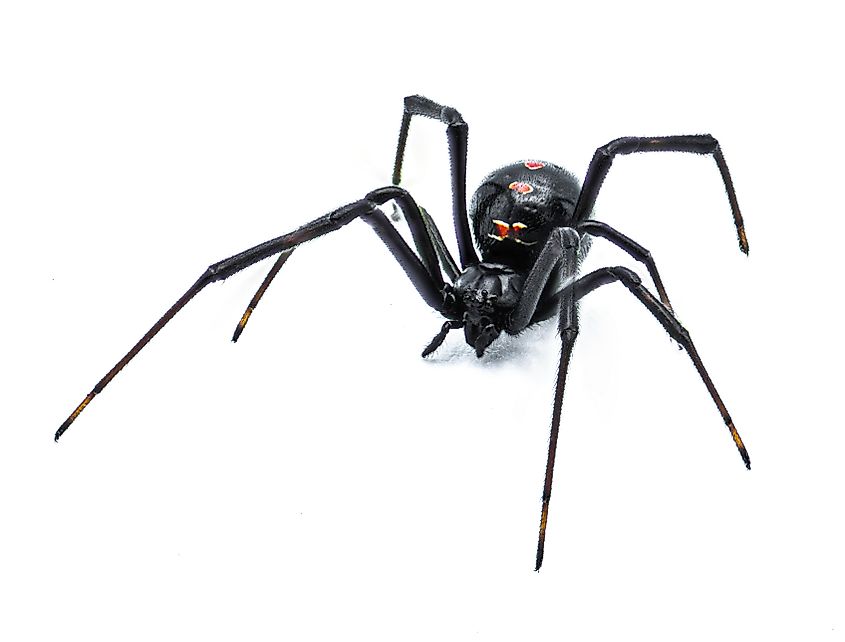
The female Black Widow spider is identifiable by its shiny black body and the distinctive red hourglass shape on the underside of its abdomen. Like most spiders, black widows prefer dark, undisturbed areas such as wood piles, basements, and sheds. Their venom contains neurotoxins that can lead to severe pain, muscle cramps, and systemic complications. While fatality is rare, bites require immediate medical evaluation. To help reduce risk of a nasty bite, wear gloves when handling materials in dark or secluded spaces. If bitten, seek medical help as soon as possible.
Brown Recluse Spider (Loxosceles-reclusa)
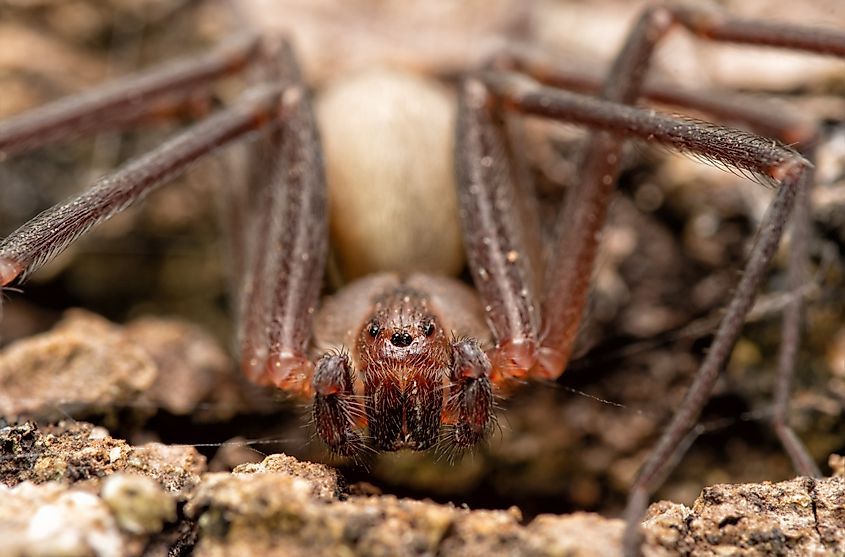
The Brown Recluse is a light brown spider with a violin-shaped mark on its back and long, slender legs. It is typically found in dark, undisturbed areas such as closets, attics, and basements. Their venomous bite can cause necrotic lesions and in severe cases the neurotoxins in their venom can cause potentially fatal reactions. To steer clear of these dangerous loners, avoid touching or disturbing spider webs, keep your living areas clean and minimize clutter to reduce hiding spots. As with its fellow arachnid, the black widow, bites should receive prompt medical intervention to best avoid complications.
American Bison (Bison-bison)
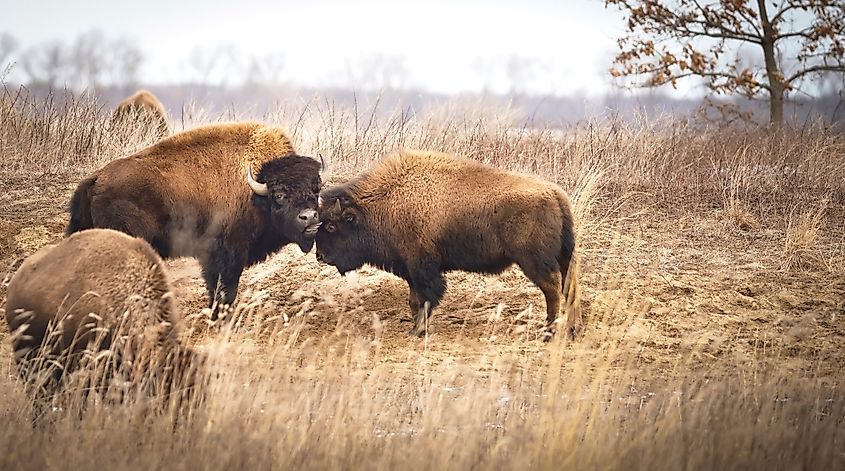
The American Bison, sometimes colloquially called the buffalo, is a member of the order Bovidae along with cattle, yaks, antelope and sheep. Weighing in at a stout 3,000 these big grazers are have shaggy brown fur, a large shoulder hump and one of the biggest heads of any land dwelling animals. Prior to the arrival of European settlers in the midwest, and plains states, the creatures once numbered in the millions, and were hunted almost to extinction with as few as 300 alive at their lowest point. Following conservation efforts throughout the 1900s, their population has rebounded and they are no longer considered endangered, number between 20,000 and 25,000 currently roaming wild through North America’s prairies, grasslands, and forested areas. Although not inherently aggressive, bison can become dangerous if provoked, and like any wild animal they can be also be unpredictable.
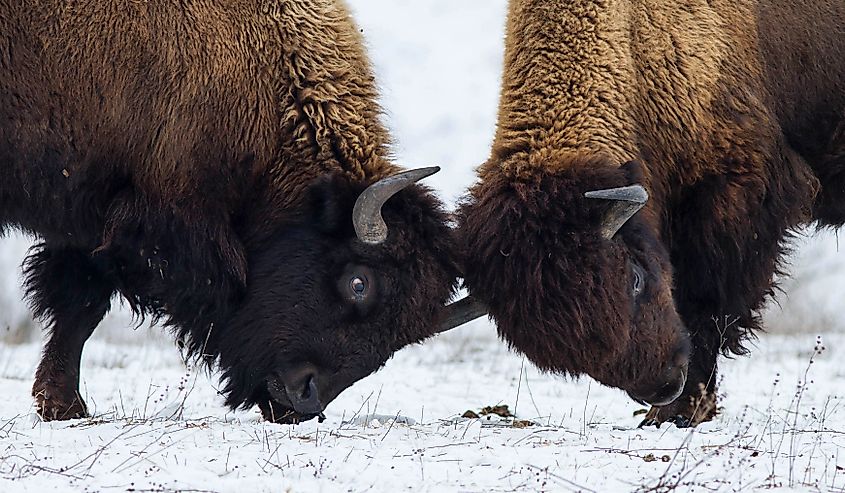
They are extremely powerful and capable of causing serious injuries if they charge, remember, they can weigh as much as your car. Always observe these majestic creatures from afar and avoid approaching them, especially in parks or reserves. It should be noted there are only about 90 bison in Indiana, all in the Kankakee Sands area.
Wild Boar (Sus-scrofa)
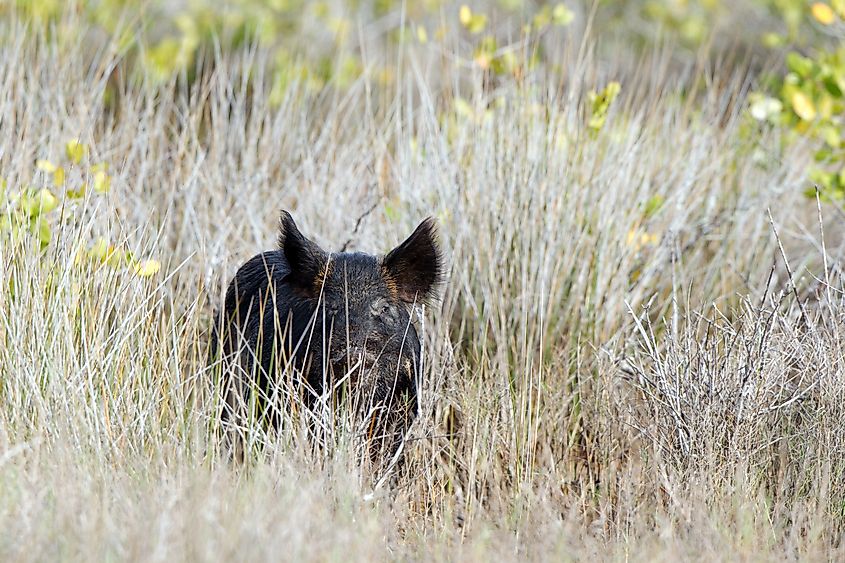
Wild Boars are an invasive species and not native to Indiana, but likely due to the release of domesticated pigs into the wild, they have found their way into the state’s ecosystem. Feral hogs, as they are also known, have a bristly coat and large, curved tusks. They are generally grayish-brown with a barrel-shaped body. They typically inhabit forests, swamps, and areas with dense vegetation. Wild Boars are notoriously aggressive and dangerous due to their sharp tusks, especially when threatened or cornered. Always be cautious in areas known to have wild boars and avoid approaching them and if you’re camping ensure to secure your food sources to deter them from coming close.
Black Bear (Ursus-americanus)
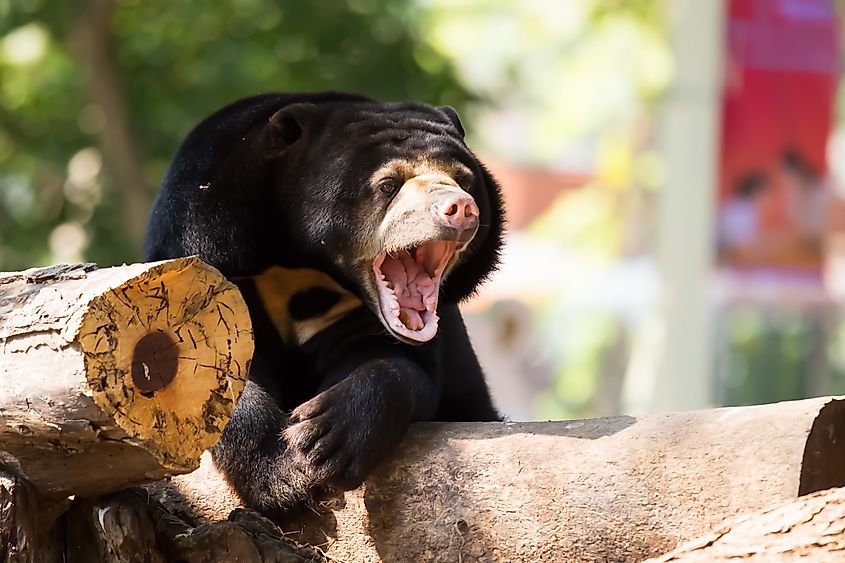
The American Black Bear is the only bear among Indiana’s wildlife. With males weighing up to 550 lbs and females up to 375 lbs, black bears typically have fur that is dark brown to black with a broad round head, small eyes and round ears. They have strong arms, sharp claws and big teeth, all of which you will want to avoid if you’re making future plans. Black Bears are found in forested areas, swamps, and mountainous regions where they satisfy their omnivorous diet with berries, nuts, and insects. While historically less common in Indiana, sightings have become more frequent as their population has expanded in recent years. Though they generally keep to themselves, they can become dangerous if they feel threatened, are surprised, or are protecting their young. Their strength and sharp claws can cause serious injuries. Additionally, they are known to be opportunistic feeders, which can lead to increased encounters with humans.
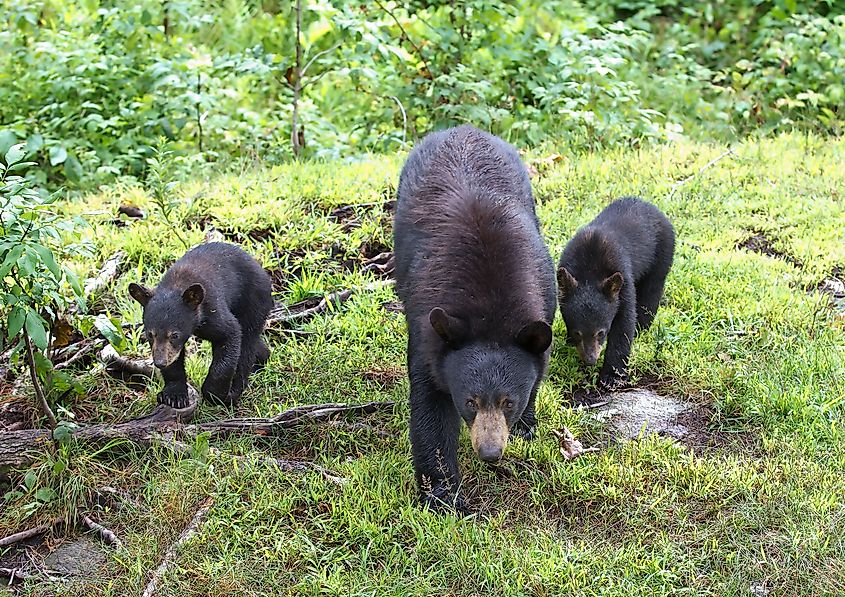
To avoid running afoul of a black bear, be cautious with food and food waste when camping, carry bear spray if you know they have been sighted close by, and definitely do not approach them if you see one. If they do become aggressive you will want to make yourself and big and intimidating as possible while making lots of loud noise.
Northern Water Moccasin (Agkistrodon-piscivorus)
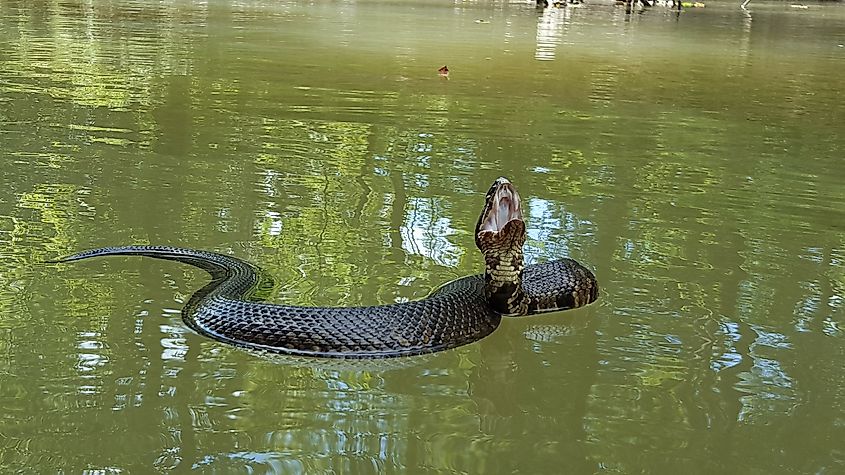
Commonly known as the Cottonmouth, the Northern Water Moccasin has a thick body with dark bands and a white lining in its mouth. Unsurprisingly, these snakes can usually be found near wet areas like swamps, marshes, and slow-moving streams. These slithery swimmers carry a powerful venom that can cause severe pain, swelling, and tissue damage. Although bites are rare, they are serious and require immediate attention to avoid complications or even death. To avoid such a fate, avoid wading or swimming in areas where water moccasins are known to be present and be cautious around water watching where you place your hands and feet.
Eastern Grey Wolf (Canis-lupus)
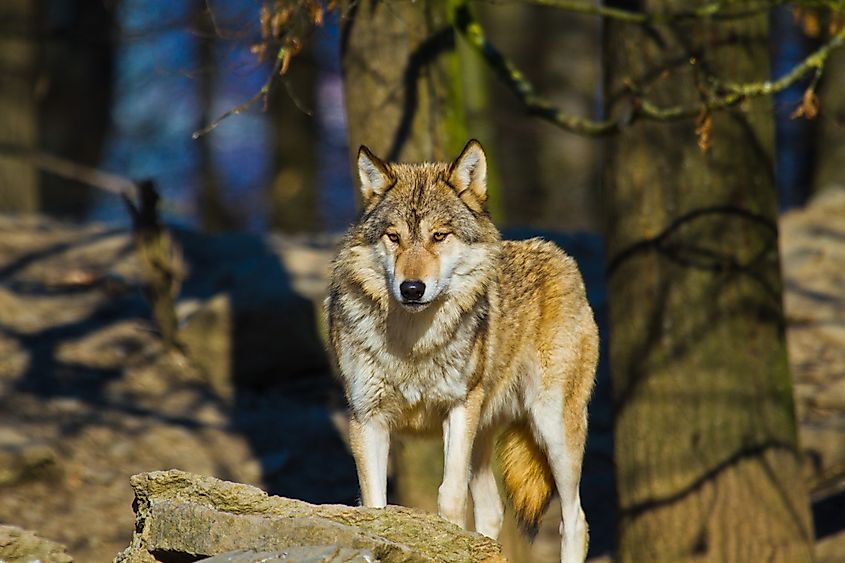
The Eastern Grey Wolf has a thick, grayish fur coat with lighter underparts and a bushy tail. Historically present in Indiana, due to the threat they pose to humans and live stock, grey wolves were the target of a campaign that successfully rid Indiana of Grey Wolves in 1908. However in recent years, several grey wolves have been spotted in Indiana. Depending on available resources, wolves may travel hundreds of miles into new territory looking for bountiful food sources. Typically found in remote, forested areas, they generally prefer to avoid humans, humans, wolves can be dangerous if they feel threatened or are protecting their territory or pups. Avoid approaching or feeding wolves. If you encounter one, keep a safe distance and back away slowly.
While many may discount Indiana's wildlife as most tame and devoid of danger, the reality is that this state contains many dangers to man as well as his pets. Indiana’s wildlife is both diverse and fascinating, but some species can pose significant risks. Understanding their characteristics and behavior helps in appreciating Indiana’s natural beauty while minimizing the risk of dangerous encounters. Always exercise caution, respect wildlife, and seek medical attention when necessary.











